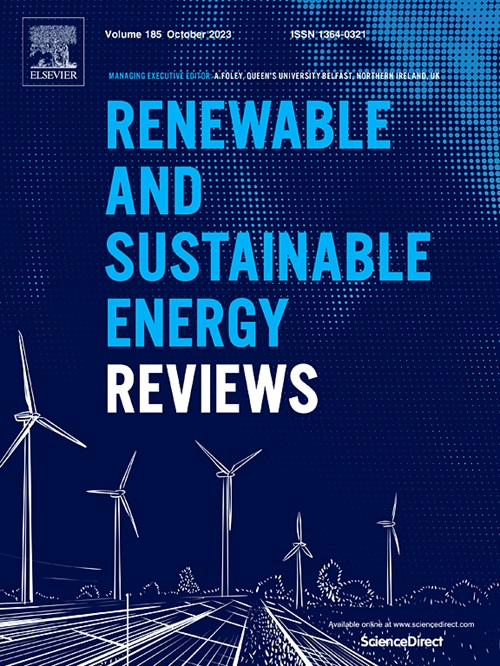Optimization and machine learning analysis of a small-scale oscillating water column (OWC) in regular waves: A computational study
IF 16.3
1区 工程技术
Q1 ENERGY & FUELS
引用次数: 0
Abstract
Addressing the global challenge of energy scarcity necessitates innovative solutions like oscillating water columns (OWC), which offer significant potential in renewable energy. This study introduces a conceptual design and optimization of a small-scale OWC. A finite volume method (FVM) based wave modelling approach integrated with a volume of fluid (VOF) method is proposed to model and simulate the two-phase, viscous, time dependent, turbulent flow in a numerical wave flume (NWF) for realistic representation of wave propagation around the OWC model. Once validated against theoretical and experimental data with an error of 0.74 %, the present numerical methodology is extended to comprehensively optimize the OWC model by sampling varying geometric dimensions under different wave flow conditions using Latin Hypercube Sampling (LHS). This approach aims to not only improve efficiency but also to enhance the understanding of how these parameters affect overall performance. This is supported by machine learning analyses, such as feature importance and SHapley Additive exPlanations (SHAP), which facilitate to understand the effect of each input parameter. Key findings include the ratio of chamber height to chamber length (H1/L) exhibiting the greatest impact on OWC efficiency, while the ratio of channel height to channel length (H2/l) showing the least significance. Additionally, the response surface analysis reveals the optimum ranges of the parameters and highlights the necessity of multi-variable optimization utilized in this study. Optimum dimensions result in a primary efficiency of 45 %, while the least efficient is found to be 2 %, emphasizing the critical importance of optimization in increasing OWC efficiency.
求助全文
约1分钟内获得全文
求助全文
来源期刊

Renewable and Sustainable Energy Reviews
工程技术-能源与燃料
CiteScore
31.20
自引率
5.70%
发文量
1055
审稿时长
62 days
期刊介绍:
The mission of Renewable and Sustainable Energy Reviews is to disseminate the most compelling and pertinent critical insights in renewable and sustainable energy, fostering collaboration among the research community, private sector, and policy and decision makers. The journal aims to exchange challenges, solutions, innovative concepts, and technologies, contributing to sustainable development, the transition to a low-carbon future, and the attainment of emissions targets outlined by the United Nations Framework Convention on Climate Change.
Renewable and Sustainable Energy Reviews publishes a diverse range of content, including review papers, original research, case studies, and analyses of new technologies, all featuring a substantial review component such as critique, comparison, or analysis. Introducing a distinctive paper type, Expert Insights, the journal presents commissioned mini-reviews authored by field leaders, addressing topics of significant interest. Case studies undergo consideration only if they showcase the work's applicability to other regions or contribute valuable insights to the broader field of renewable and sustainable energy. Notably, a bibliographic or literature review lacking critical analysis is deemed unsuitable for publication.
 求助内容:
求助内容: 应助结果提醒方式:
应助结果提醒方式:


